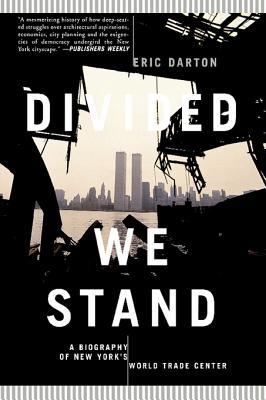
Divided We Stand
A Biography Of New York's World Trade Center
کتاب های مرتبط
- اطلاعات
- نقد و بررسی
- دیدگاه کاربران
نقد و بررسی

November 29, 1999
Despite its coy and misleading subtitle, this is a mesmerizing history of how deep-seated struggles over architectural aspirations, economics, city planning and the exigencies of a democracy undergird the New York cityscape. Taking the planning and building of the twin towers of the World Trade Center as a point of departure, Darton treats readers to a smoothly written and provocative study of everything from the potentially utopian nature of cities to the role of the automobile in urban redevelopment, and from the aesthetics and politics of constructing tall structures (including the Eiffel Tower) to a history of the contested development of lower Manhattan. While grounded in the theories of such diverse thinkers as Jane Jacobs, Peter Kropotkin, John Ruskin, Marshall Berman, LeCorbusier and Lewis Mumford, Darton's dramatic narrative never loses sight of the strong personalities and (often unscrupulous) political hardball that reshaped Manhattan. Central figures include such power players as master planner Robert Moses ("who by his own description hacked his way through New York with a meat ax") and investment developer David Rockefeller and his brother, Nelson, the governor of New York State (whom Darton casually compares to gangsters). A professor of media, technology and cultural studies at Hunter College, Darton is best when elucidating the economic interests behind urban renewal and the destruction of neighborhoods that has often ensued in more than 40 years of Manhattan redevelopment, culminating in the building of one of New York's iconic landmarks.

























دیدگاه کاربران